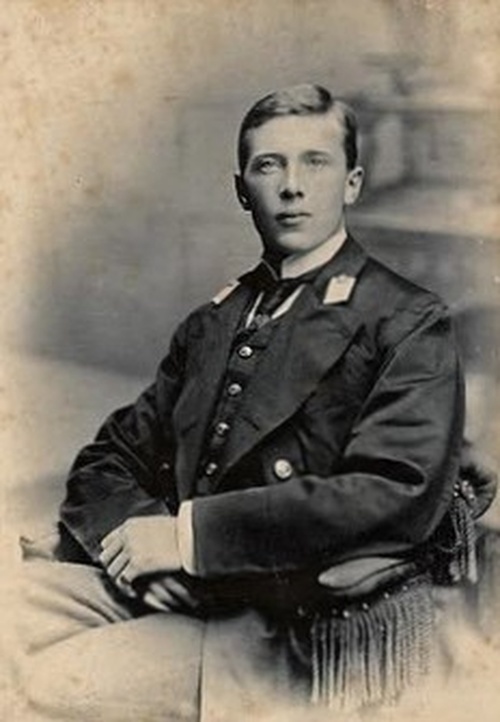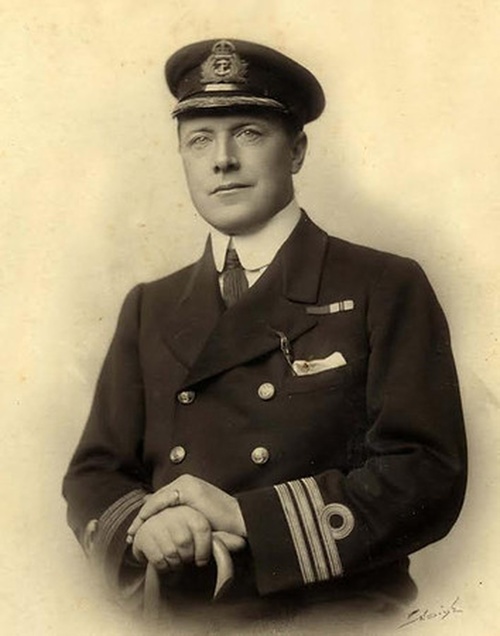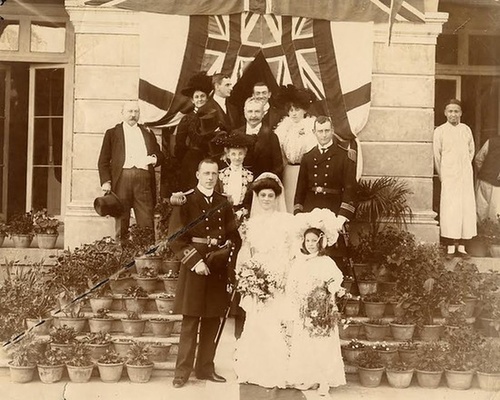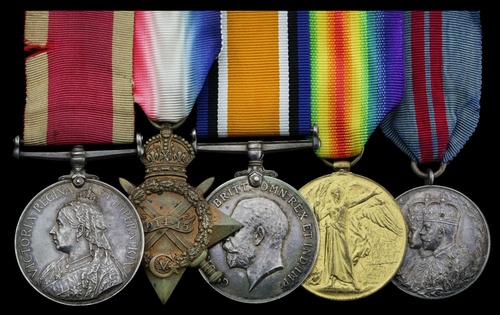Auction: 20001 - Orders, Decorations and Medals - conducted behind closed doors
Lot: 802
The historically important 'Sinking of the Otranto' group of five to Captain E. G. W. Davidson, who was Captain of the troop ship Otranto when she foundered off the coast of Scotland on 6 October 1918, with the loss of 351 American soldiers and 80 British crewmen; after this unspeakable tragedy, which occurred just before the Armistice, Davidson's body was found washed ashore at Machin Bay
China 1900 (Lieut. E. G. W. Davidson, R.N., H.M.S. Hermione.); 1914-15 Star (Commr. E. G. W. Davidson. R.N.); British War and Victory Medals (Capt. E. G. W. Davidson. R.N.); Coronation 1911, unnamed as issued, good very fine (5)
Ernest George William Davidson was born in Rangoon in 1874, the scion of an extended branch of the Davidsons of Tulloch, chief family of Clan Davidson. During the previous century the Davidsons were successful merchants in the West Indies, earning enough capital to purchase Tulloch Castle, Ross-Shire in 1760. Ernest's uncle Sir Arthur Davidson was a royal Equerry from 1891 to 1922. Young Ernest entered the Royal Navy as a Cadet on 15 July 1888. He rose to Midshipman on 15 August 1890, Sub-Lieutenant on 14 September 1894, and Lieutenant on 1 April 1897. He served as a Lieutenant aboard H.M.S. Hermione, a 2nd Class twin screw cruiser, during the Boxer Rebellion of 1900 (Medal). Remaining at the China station, by 1906 Davidson was serving as Lieutenant and Commander aboard H.M.S. Bramble, a 1st Class twin screw gun-boat. He became full Commander on 31 December 1910. He married Winifred Davidson and lived with her at The Red House, Third Avenue, Frinton-on-Sea, Essex.
Davidson had retired by the time the Great War broke out. Manpower shortages were such that in 1918 he was appointed Captain of the Otranto, a former Orient Steam Navigation Company liner commandeered by the Royal Navy as a troop-carrier. Only six weeks before the Armistice, she was part of Convoy HX50, bound for Glasgow and Liverpool, bringing 20,000 American soldiers across the Atlantic. The voyage was ill-fated from the start. On 1 October, Otranto collided with a French fishing schooner, sending her to the bottom but rescuing all 36 French sailors. This incident delayed the convoy by five hours. As the convoy neared the coast of Ireland, two British warships, H.M.S. Minos and H.M.S. Mounsey, were assigned to bring it safely into port.
By 6 October, a terrible squall had descended on the convoy and visibility deteriorated. Land was sighted that night. Otranto believed this to be the coast of Ireland, and veered to port accordingly. Another transport, the Kashmir, correctly interpreted the coastline as the isle of Islay, and turned sharply to starboard. The result was that Kashmir collided with Otranto, tearing an enormous hole in her side. Kashmir was virtually unharmed, but water gushed into Otranto, drowning scores of men within seconds. Captain Davidson scanned the rocky coastline for a safe landing place, but all he could see were sheer cliffs. Many of Otranto's lifeboats had been crushed by the collision, and those still seaworthy would never have survived the rough seas. Sending out a distress signal, Davidson had no option but to anchor and pray for relief.
Miraculously, the destroyer Mounsey picked up Otranto's signal and came to the rescue. Davidson, realising that the tiny destroyer would be crushed by contact with his own ship, lowered Otranto's lifeboats over the sides to act as fenders. Despite the gigantic waves, Lieutenant F. W. Craven, commanding Mounsey, managed to bring his vessel alongside Otranto. The lifeboats held for a few moments before splintering, and with an appalling shudder the two vessels crashed alongside each other. At this point the American soldiers, who had been standing patiently in lines, waited for Mounsey to rise with the swell and then jumped for their lives. Many discarded their boots to make themselves lighter. Several men lost their footing and were crushed between the two ships, but nearly 600 lives were saved. Mounsey, now severely damaged and in danger of swamping with her huge cargo of troops, left for Belfast, which she reached in safety. There was nothing more she could do.
Davidson went down with the ship, along with 351 American soldiers and 80 British crewmen. During the following days, bodies were washed up all over Machir Bay, Islay. Davidson's body was found by the Argyllshire Constabulary on 2 November, with his binoculars, wristwatch, cigarette case and pipe. He may also have been wearing his China 1900 and Coronation 1911 Medals. Davidson was buried on Islay at the Kilchoman Military Cemetery. He is also commemorated by a memorial in Thurlestone Churchyard, Devon; sold with copied research.
Subject to 20% VAT on Buyer’s Premium. For more information please view Terms and Conditions for Buyers.
Sold for
£4,800
Starting price
£550











